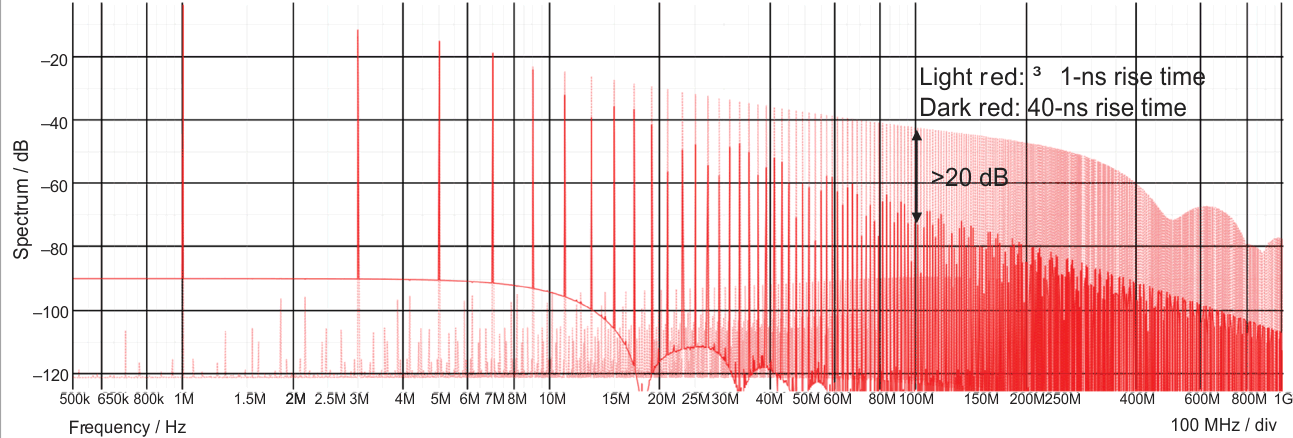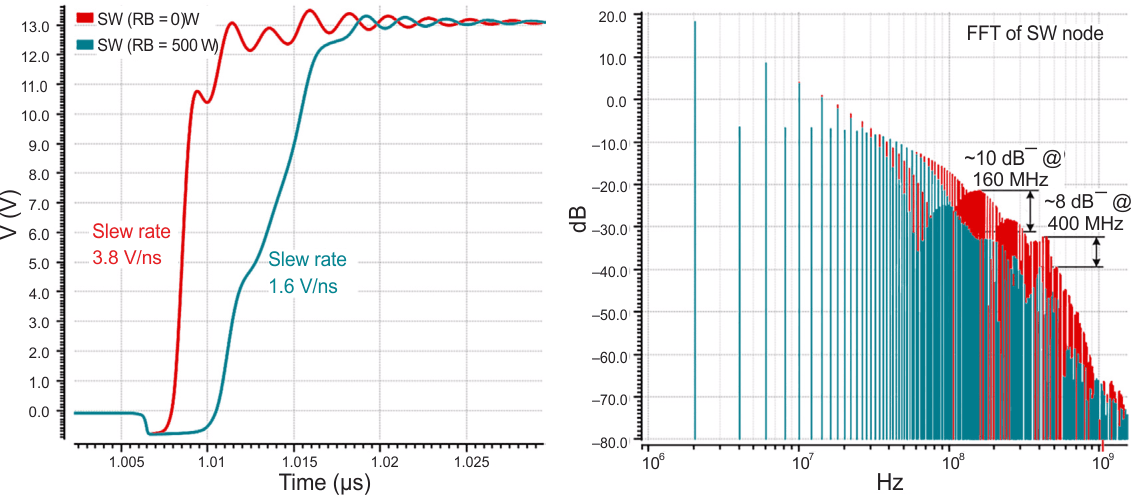SLYY200A April 2021 – December 2023 LM25149 , LM25149-Q1 , LM5156-Q1 , LM5157-Q1 , LM53635-Q1 , LM60440-Q1 , LM61460-Q1 , LM61495-Q1 , LMQ62440-Q1 , LMR33630-Q1 , LMS3655-Q1 , TPS55165-Q1 , UCC12040 , UCC12050
- 1
- Overview
- At a glance
- What is EMI?
- Conventional methods to reduce EMI in the low- and high-frequency ranges
- Innovations in reducing low-frequency emissions
- Spread spectrum
- Active EMI filtering
- Cancellation windings
- Innovations in reducing high-frequency emissions
- HotRod™ package
- Enhanced HotRod QFN
- Integrated input bypass capacitor
- True slew-rate control
- EMI modeling capabilities
- Low-frequency EMI designs using WEBENCH® design tool
- Conducted and radiated EMI results published in data sheets
- Conclusion
- Keep product categories for low EMI
Innovations in reducing low-frequency emissions
Look at a few techniques that TI uses when building its converters and controllers to address the fundamental trade-offs involving efficiency, EMI, size and cost.
 Figure 7 EMI plots of square waveforms with different rise times.
Figure 7 EMI plots of square waveforms with different rise times. Figure 8 The effect of different switch-node slew rates and associated ringing on
high-frequency emissions. Reduced slew rates impact EMI roll-off in the 30- to
200-MHz band while the reduced ringing impacts EMI at the ringing frequency
around 400 MHz.
Figure 8 The effect of different switch-node slew rates and associated ringing on
high-frequency emissions. Reduced slew rates impact EMI roll-off in the 30- to
200-MHz band while the reduced ringing impacts EMI at the ringing frequency
around 400 MHz.